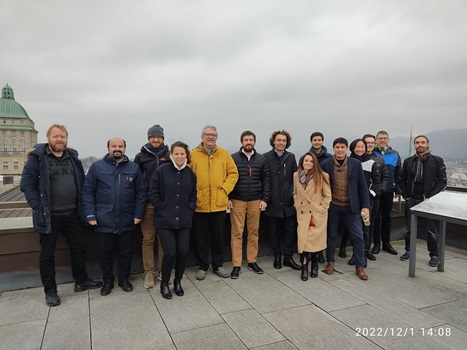The HIPERWIND project aims at achieving a 9% reduction in the Levelized Cost of Energy of offshore wind farms, through advancements of basic wind energy science which will lead to reductions in risk and uncertainty. The outcome is cost efficient offshore wind through a reduction in unnecessary use of materials, less unscheduled maintenance, and optimized operating strategy tailored at delivering power with high market value. The project was completed in 2024 and successfully achieved its goals.
There are five Specific Objectives (SO):
- SO1: Improve the accuracy and spatial resolution of met-ocean models and quantify key uncertainties in environmental conditions that affect offshore wind farm design and operation, including wind resource, wind turbulence, waves, and their interactions, and joint probability
distributions – to achieve a 30% total reduction of uncertainty in environmental exposure (WP2).
- SO2: Develop novel load assessment methods tailored to the dynamics of large offshore fixed bottom and floating wind turbines, realistically capturing complex phenomena such as fluid structure interaction, wake effects and transient weather events, thus leading to a 30% reduction in load assessment uncertainty (WP3).
- SO3: Develop an efficient reliability computation framework, treating uncertainties in a consistent way and making full-scale probabilistic design approach feasible (WP4).
- SO4: Develop and validate the modelling framework for degradation of offshore wind turbine components due to loads and environment, to establish representative design load criteria for major components and enable reduction in maintenance costs (WP5).
- SO5: Prioritize concrete, quantified measures that result in LCOE reduction of at least 9% and market value improvement of 1% for offshore wind energy, based on the developed new technologies (WP6).
The project has received funding from the European Union’s Horizon 2020 Research and Innovation Programme under Grant Agreement No. 101006689.
Meet the HIPERWIND Team

Standing from left to right:
- Erik Vanem, DNV
- Mostafa Bakhoday-Paskyabi, University of Bergen
- Pierre-Antoine Joulin, IFP Energies Nouvelles
- Anais Lovera, Electricite de France
- Emmanuel Ardillon, Electricite de France
- Nikolay Dimitrov, Technical University of Denmark
- Bruno Sudret, ETH - Eidgenoessische Technische Hochschule Zuerich
- Laura Mayol, IFP Energies Nouvelles
- Elias Fekhari, Electricite de France
- Miguel Munoz Zuniga, IFP Energies Nouvelles
- Louise Yeow, Electricite de France
- Styfen Schär, ETH - Eidgenoessische Technische Hochschule Zueric
- Asger Bech Abrahamsen, Technical University of Denmark
- Stefano Marelli, ETH - Eidgenoessische Technische Hochschule Zueric